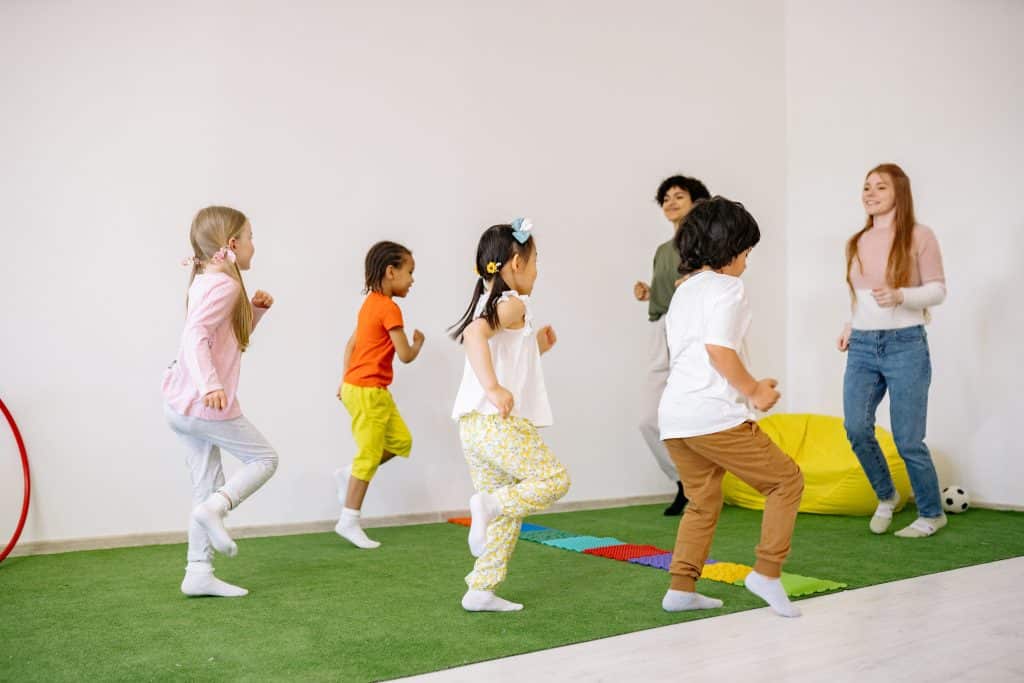Exercise is an important component to maintaining a healthy lifestyle for all children, even those with autism. In the United States, over 16% of children between the ages of 2 and 19 years of age are overweight. For children with Autism Spectrum Disorder or (ASD), this percentage is even higher with 19% of children with Autism being overweight. Then an additional 36% of children are at risk for becoming overweight. Children with Autism are also more likely to display difficulty with balance, coordination, flexibility, and motor planning than children without ASD. Lack of physical activity may also increase these difficulties. Therefore, engaging children with ASD in physical activity and fitness should be emphasized as part of daily activities.
Table of Contents
What Types of Exercise Programs Are Appropriate for Children With ASD?
The answer should really begin by focusing on the interests of your kid. What types of activities does he or she enjoy? If your kid likes to run, maybe running on a treadmill or around a school track may be the best physical activity. If your kid loves the water, then going to the swimming pool would be the best option. There is no magic answer to what type of activity is the most appropriate for children with ASD. The goal is simply to get your child moving.

Read more: What is Physical Education?
How Do I Engage My Child With ASD in Physical Activity?
If you’re trying to get your child into a physical activity, it’s important to find something they enjoy. Once you’ve found that activity, it’s important to keep them engaged in it. Some kids might need some physical or verbal guidance, like holding their hand or walking them through the activity. Others might benefit from having someone model the activity with them, like a friend, sibling, or parent. And also, don’t underestimate the power of positive reinforcement! Stickers, favorite toys, or snacks can be great motivators to keep your child interested and excited about the activity.
Goally | Visual Scheduler for Autism
Does your child struggle with getting ready in the morning independently? Goally’s routine app on the best tablet for kids breaks down large tasks into small, achievable steps for autistic kids. Create custom routines with your own videos & pictures for every step.
Autism and Fitness
Exercise plays a crucial role in promoting a healthy lifestyle for children with autism. With a higher risk of overweight and difficulties in balance, coordination, and flexibility, it becomes even more important to incorporate physical activity into their daily routine. The key to successful engagement lies in identifying activities that align with your child’s interests and providing the necessary support and guidance. Whether it’s running, swimming, or any other activity, the goal is to keep them moving and motivated. Positive reinforcement can work wonders in keeping your child engaged and enthusiastic about exercise. So, embrace the power of physical activity, tailor it to your child’s preferences, and witness the positive impact it can have on their overall well-being.
FAQs About Autism and Exercise
Can exercise benefit children with autism? Yes, exercise can be extremely beneficial for children with autism! Studies have shown that regular physical activity can help improve social skills, communication, motor skills, and overall behavior in children on the autism spectrum. What types of exercises are best for children with autism? The best types of exercises for children with autism are those that they enjoy and can participate in comfortably. Some examples might include swimming, dancing, yoga, or martial arts. How can parents encourage their children with autism to be more active? One way to encourage children with autism to be more active is to make physical activity a fun and positive experience. This might involve finding activities that they enjoy, incorporating favorite toys or games, or exercising together as a family. Are there any special considerations that need to be taken when exercising with a child with autism? Yes, there are a few special considerations that should be taken when exercising with a child with autism. For example, it may be helpful to provide clear and consistent instructions, use visual aids to help with communication, and be aware of any sensory issues that may impact their comfort level. Can exercise help children with autism manage their emotions? Yes, exercise can be an effective way to help children with autism manage their emotions! Physical activity has been shown to help reduce stress and anxiety, improve mood, and increase feelings of calm and relaxation.
This post was originally published on 06/24/2021. It was updated on 09/21/2023.

Goally
We help parents teach their kids life skills, like doing bedtime and morning independently. Backed by science, we incorporate evidence-based practices and expert-informed designs in all of our apps and content.






